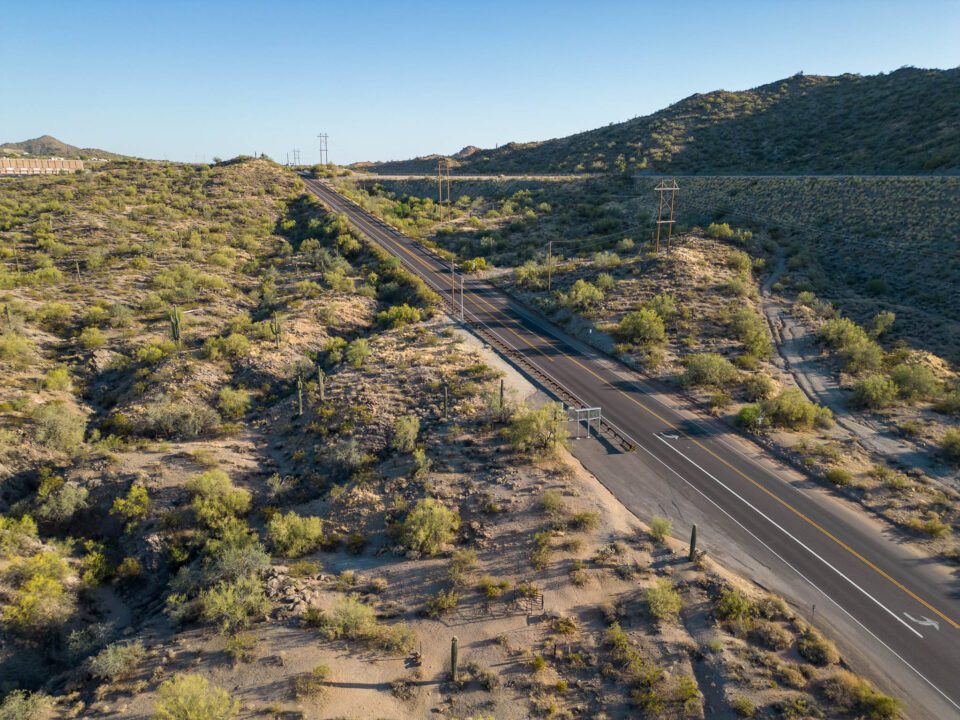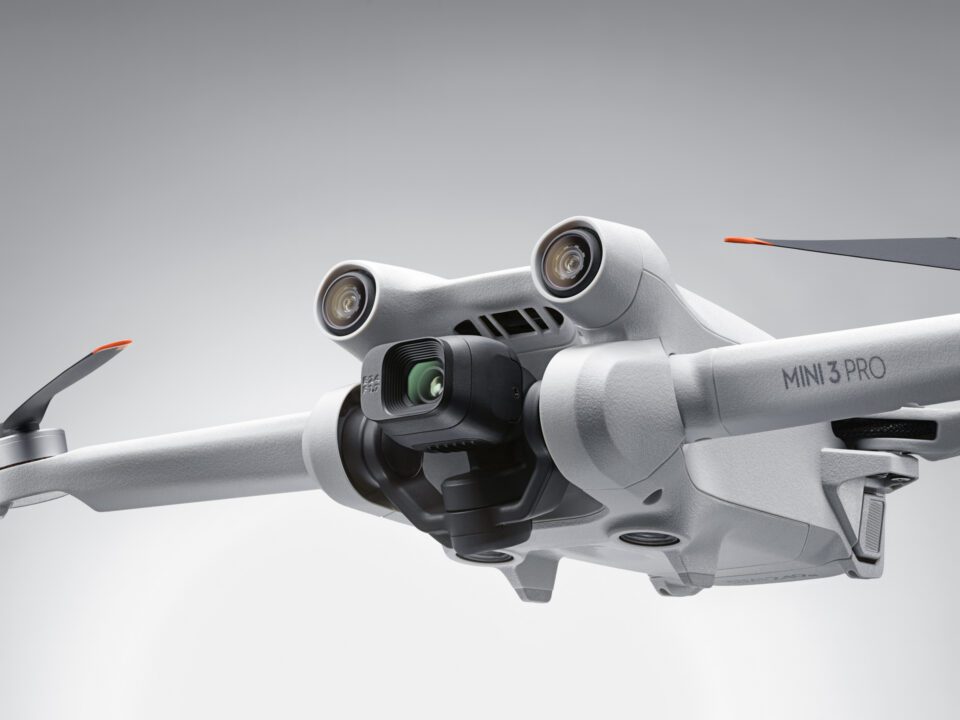20.37.52 DJI Launches Mini 3 Pro: 4K 60p Video, 48MP Photos, 249g | |
BY ALEX COLEMAN DJI has officially launched the Mini 3 Pro, a drone that features high-end and novel capabilities, like 4K60 video, up to 47 minutes of flight time, and APAS 4.0 obstacle detection and avoidance. Importantly, the Mini 3 Pro with the Intelligent Flight Battery still comes in at under 250g. For my use of drones, however, image quality is the biggest factor – does the Mini 3 Pro deliver? In this first look, I’ll share the full details of the Mini 3 Pro, as well as some real-world sample photos from my hands-on time with DJI’s newest drone. Mini 3 Pro SpecsThe Mini 3 Pro compares really favorably to the Mini 2 and even the Mavic Air 2, a significantly larger drone. The Mini 3 Pro features a 1/1.3 inch sensor, with a 48MP mode (although typical captures are 12MP). The lens is a 24mm equivalent with an f/1.7 aperture. The sensor is dual native ISO capable and allows HDR videos, which allows for great dynamic range, especially for the smaller sensor size. In video mode, the Mini 3 Pro supports 4K/60fps video, beating the Mini 2’s 4K/30. With a max video bitrate of 150Mbps and support for H.264/H.265, I’ve found the video to look great even in reasonably challenging lighting. The drone also supports D-Cinelike color mode, a not-quite-D-log mode that helps pack more highlight and shadow information into the video footage, but will require some post-processing to look the best. For photos, the drone also supports raw image capture. These features make it clear that DJI hasn’t arbitrarily limited the drone’s imaging functionality by locking away more advanced tools. Compared to the Mavic Air 2, the Mini 3 Pro supports the newer version of DJI’s impressive video transmission system, OcuSync. OcuSync 3.0 extends the rated range to 12km, while in the real world this translates to a rock-solid connection and video feed in all the circumstances I’ve flown in. The prior generation Mini 2 lacks any obstacle sensing, leaving you open to potential collisions. Meanwhile, the Mini 3 Pro covers the same range of forward, backward, and downward directions as the Mavic Air 2, but the Mini 3 Pro adds the newer Advanced Pilot Assistance Systems (APAS 4.0), which can automatically detect obstacles in real time. Battery life can be a major factor, particularly for the small and light category that the Mini 3 Pro sits in. While the previous Mini 2 delivers 31 minutes and the Mavic Air 2 delivers 34 minutes, the Mini 3 Pro offers a very unique feature for a consumer drone: different battery sizes. While drone pilots have had the option of choosing different battery sizes in hobbyist drones, the Mini 3 Pro brings two great options to the table. The Intelligent Flight Battery keeps the drone under the 250g mark, while still improving flight times to 34 minutes. The larger battery option, the Intelligent Flight Battery Plus, bumps flight times all the way out to 47 minutes, while still keeping the drone’s existing slim profile. The larger battery will put your drone over the 250g mark, but for many pilots, the regulatory change is no problem, while the extra flight time is a useful benefit. The Mini 3 Pro isn’t just offering battery innovations, however. The gimbal can actually rotate to allow vertical shooting. With so many platforms preferring vertical video, being able to shoot vertically, natively, means more resolution and less cropping. I also find that it’s way easier to just see the shot, rather than have to picture your framing after a crop. This feature is effortless to activate via an onscreen button, and the switch takes less than a second, while preserving all the drone’s flight and navigation characteristics. Physical CharacteristicsThe specs don’t really tell the whole story on the Mini line. Whether you’ve already flown larger drones from the Mavic or Phantom line, or haven’t yet used a drone at all, I expect you’ll be impressed when you get the Mini 3 Pro in your hand. Folded up, it’s smaller than most of my camera lenses and easily fits into a lens space in my camera bag. At 249 grams (just over half a pound), it weighs less than most lenses, too. If you’re a landscape photographer, it’s a great option for adding to your camera bag to enable some unique compositions in the backcountry. I consider it a much less intimidating platform to get started flying, thanks to both the small size and the host of flight safety features. The only thing that runs against the compact size of the drone is the heft and bulk of the remote. The stock controller, the RC-N1, is basically as big as the drone itself. While the RC-N1 has great build quality, the heft is in sharp contrast to the drone, and will definitely take up another lens slot worth of bag space. You can store the sticks within the remote to help slim it down, however. Amazingly, the Mini 3 Pro is only slightly larger than the battery pack of my Mavic 3, which should give some context to just how small the drone is. Photo QualityWhile I’m still testing the drone with an eye towards a full review, I’ve been able to log a couple flights with a model provided by DJI for review purposes. To sum up image quality in a few words: excellent, particularly for the size. The files are very clean in daylight conditions, with good resolution that shows only slight color artifacts on small details like fences. The images also feature very natural dynamic range, a crucial factor for drones, where it seems parts of your scene are always verging on over and underexposure. 
Fine details are reasonably well reproduced, although this style of sensor layout can look a bit nervous in areas like tree branches. The 48MP mode can be an interesting trade-off, bringing some more resolution, but also bringing out some artifacts. As an example, both the 48MP and 12MP capture modes handled the road reflectors in the following sample shot differently. The 48MP mode “erased” them, while the 12MP mode resulted in some tiny color artifacts on the lines. Granted, these problems are only for pixel-peepers, but just as I found in my flight experience with the Mavic Air 2, the 48MP mode is not a shortcut to revolutionize image quality. 
My preferred processing for the best image quality from this style of sensor involves either HDR stacking or the Enhance Details functionality in Lightroom. Both options give the image quality an extra boost, in either high dynamic range situations or compositions with a range of fine details where false colors can arise. Neither tool is critical, but as the drone makes it so easy to shoot brackets, I find myself tending to default to them just for insurance, as gauging exposure on a phone screen in direct sunlight can be tricky. The raw files themselves are DNG format and work great with Lightroom. While a profile wasn’t available at the time of writing, I find the shots need few lens corrections. Distortion, if present, was unnoticeable on natural subjects. Vignetting was not a problem, but about +10 on the Lens Corrections vignetting slider removed any trace. Meanwhile, chromatic aberrations were handled very well. A slight purple fringe can be seen on high contrast edges at 48MP, but it’s not visible at 12MP. Chromatic aberration is fairly easy to remove in post-production anyway. Another favorite feature of mine is the drone’s ability to automatically shoot a range of panoramas, including 360 degree, 180 degree, and wide angle shots. Combined with the drone’s unique point of view, these panoramas can offer a ton of resolution and allow for some interesting compositions. The drone can even automatically stitch the images in flight, although I’d still prefer a mode where the images are just shot and can be processed later. 
The vertical shooting mode also opens up a whole new creative possibility for drone photographers, as compositions from drones have previously been constrained to images in landscape orientation. By swiveling the whole gimbal to position the camera vertically, the drone is able to leverage the full resolution and field of view of the sensor. For vertical photo subjects, this makes it far easier to capture the subject in a single shot, versus having to stitch and crop a panorama. This is a feature I’d love to see come to DJI’s other drones, as it really does create new options for subjects. Furthermore, unlike some of the other modes on drones, namely the telephoto mode on the Mavic 3, vertical shooting is fast, easy to select, and preserves all your camera options. That means full raw files and great usability. 
Video QualityWhile I’m primarily a drone photographer, I was equally impressed by the video quality from the Mini 3 Pro. At 4K and 60fps, the video was clean and natural looking, with great color and dynamic range. The lens on the Mini 3 Pro also proved to be reasonably resistant to flare. While I could provoke some flare by shooting directly into the late afternoon sun, it wasn’t an issue in normal flight. Bitrates are solid, and the color science in the normal color mode was perfectly natural looking. For the typical uses of the Mini 3 Pro, I’d expect you could just shoot and edit video with little to no need for post-processing adjustments. The drone also supports slow motion video at 1080P and 120fps. ConclusionThe Mini 3 Pro really lives up to its name, in every sense. Offering evolutionary improvements over the Mini 2 and even the Mavic Air 2, the Mini 3 Pro represents a phenomenal package for a range of photographers and videographers. The Mini 3 Pro is a low-compromises way to get a drone that fits into a jacket pocket, while offering all the flight and performance features of higher-end drones (or even more if you’re using an older drone). If you’re new to drones, the Mini 3 Pro is a great way to get into drone photography and videography, featuring smart flight and capture modes to make even complicated shots easy, all while easing the regulatory burden thanks to the sub-250g weight class. The drone really brings pro features to a price point and size that I didn’t expect. To me, the main reason to go with a bigger drone at this point (like the Mavic Air or Mavic Pro series) is for the bigger camera sensor. As good as the Mini 3 Pro’s 1/1.3 type sensor is, there are times when you’ll want the quality of a 1-inch or micro four thirds type sensor instead. But if portability and regulatory ease are your priorities, the Mini 3 Pro is as good as it gets. The DJI Mini 3 Pro is available in a range of kits, including the Mini 3 Pro, Mini 3 Pro Fly More Kit and Fly More Kit Plus, which adds a carrying bag and additional batteries of different capacities, and the Mini 3 Pro Kit with a DJI RC, a controller which integrates a full touchscreen for phone-free drone control. It’s currently available at B&H for $670 without a remote, and $760 with the RC-N1 remote. Read More: https://photographylife.com/news/dji-launches-mini-3-pro | |
|
| |
| Total comments: 0 | |





